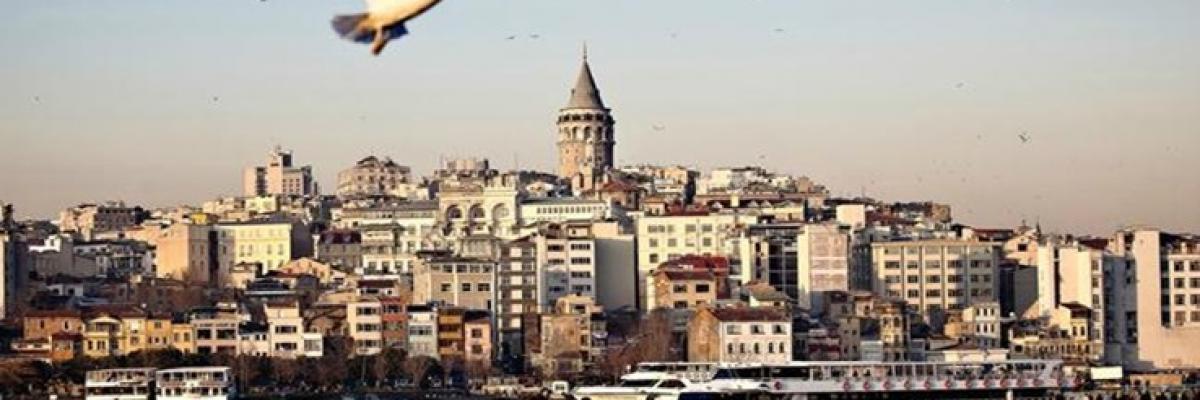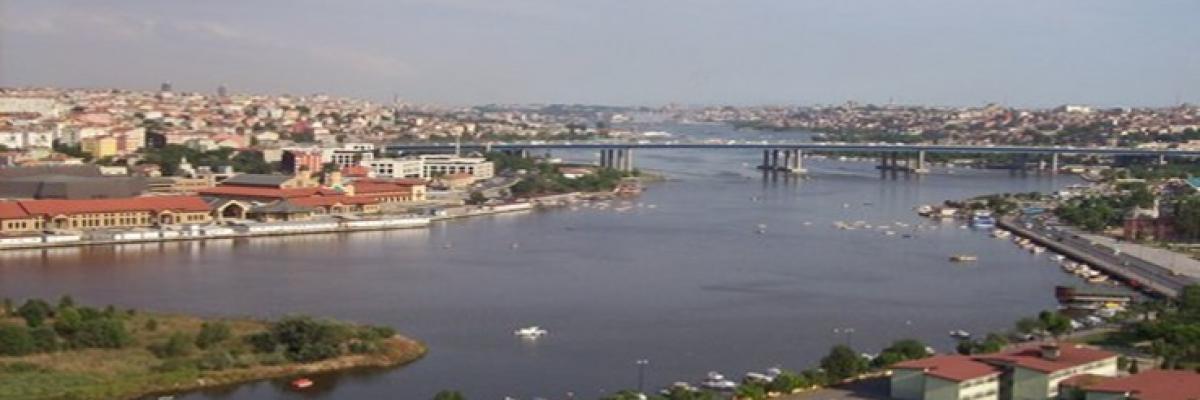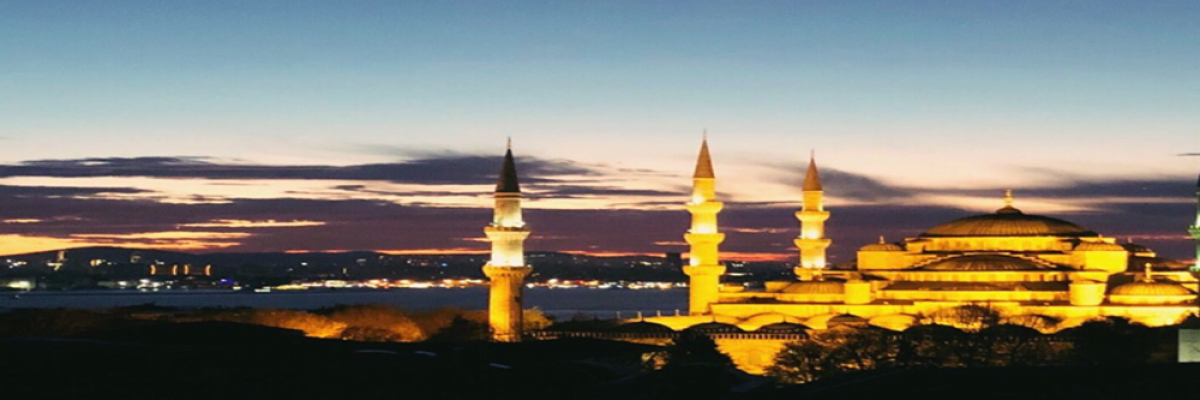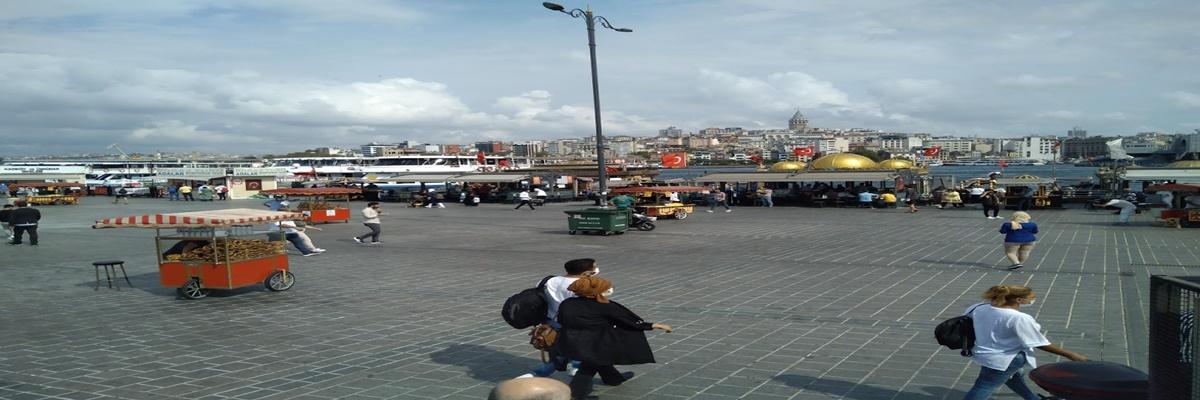The Art Of Marbling
Posted on 26 September, 2020 by M.İlker AKIN

What is the art of marbling? What materials are used and how are they made?

The Art Of Marbling, which belongs to ancient times and dates back to the Ottoman period, among the many branches of art; It has come up to the present day by progressing in a master-apprentice relationship. Ebru art was an art that was mostly used for the decoration of the covers and inside of hardcover books in the Ottoman period. Ebru art is a paper art made with water and paint.
In the art of Marbling; Paints that take shape in a person's hands integrate with that person's talent and imagination. The colors give the appearance of dancing in a certain harmony; It enables him to emphasize how fine marbling art is. There are many artists who practice the art of marbling, which creates a very visually effective feeling, but there are no more artists than before. Mustafa Düzgünman, one of the masters of marbling art; He is one of the artists who are famous for the works he left and the masters he trained.

How Is Marbling Art Made?
Used materials:
Paste paper with matte and absorbent properties,
• Adhesive called tragacanth, boat (prepared by putting tragacanth inside),
• Dyes (oxide yellow, oxide red, oxide black, lahur indigo blue are the most used colors.)
• edema; It is used to fix the colors by adhering to the tragacanth.
• We; It is the material used to shape marbling.
• Brush
Tragacanth is put into the boat and added until it reaches the proper consistency. The liquid formed is filtered through a thin cheesecloth and cleaned. Earth paints in different colors are crushed to ensure a suitable situation. By putting cattle gall to the dyes prepared in this way; It is left to wait for 15 days. After the waiting process is completed, it is made ready by diluting. Paint is dripped onto the water with the help of a brush carefully. Shaped and put on the paper boat, and the process is completed when the figure appears on the paper. It is important to do it carefully, as it is done in one go.

Marbling Art
Marbling is the embrace, fusion, and dance of colors on a concentrated liquid with unlimited changes. The art of marbling has made it mysterious for centuries and pushed the artist to overcome all the secrets and chaos of the world at the beginning of the marbling boat; This art is a fluid, always dynamic, changeable art of paper painting that gives the opportunity to try infinite techniques that transcend itself. Ebru; Although it is used in gilding and calligraphy in book pages, murakka edges, bindings, writing spaces and seats, it is considered and exhibited as a work of art in its own right today.
It is absolutely impossible to say from what date the art of Ebru, which is one of the most important arts of Central Asian Art and paper decoration, has been known. Such a document has not survived. Even in old dated book bindings, we see marbling as the side paper (the paper that connects the cover and the book). It is also possible to see marbling papers affixed to the moldings around the inscriptions in an old murakka.However, even if the date these works were written is known, it is not considered a document about marbling for us. Such old manuscripts have been repaired and renewed several times. The oldest marbling paper is a Malik-i Daylami writing belonging to the year 962 H. (1554). Since the writing is written on light marbling, the history of marbling paper has been learned from the date of writing.
Marbling Art is named as Turkish Paper or Turkish Marble paper in the west. Europeans call marbling paper marble paper. Color clusters resembling cloud occur on the marbling paper. Therefore, the word Ebri, which means like cloud, is used. Famous marblers known in our history are Hatib Mehmet Efendi, Şeyh Sadık Efendi, Hezarfen Edhem Efendi and Necmeddin Okyay.
Today, it is impossible to say with certainty from what date marbling, which is one of the most important art of paper decoration, has been known; We are deprived of such a document. However, even in very old book bindings, we see marbling as the side paper (the paper that connects the cover and the book). However, even if the date when these works were written is known, it cannot be considered as a document about marbling for us. Because such old manuscripts have been repaired and renewed at least several times over the centuries. It is possible that these marbling papers were placed during that repair; that is, it comes to mind that the book will belong long after its date. The marbling papers, which contain a calligraphy sample provided that the date on which it is written is recorded, is like a document in terms of showing the time. The oldest marbling paper that we can see is a Malik-i Daylami writing belonging to the year 962 H. (1554). In order to find the starting date of marbling, one can go down to the 15th century.
Why Turkish Marbling?
The western name of marbling paper is Turkish Paper or Turkish Marble Paper. At the entrance of the work named Buntpaper (variegated paper), which includes the publication on marbling in Europe, it is stated that marbling originated from Turkistan. The rumor among the marbling artists in our country is that marbling really started in Bukhara. Ebru to Turkey via Iran after the Great Silk Road comes with taking the name Ebru.
What Does Ebru Mean?
Color clusters resembling cloud occur on marbling paper. This is why the papers, which take the name Ebri in Persian, which means cloudy cloud, have been referred to as this for centuries. However, since the word marbling was found more harmonious, the name of art changed and it started to be called marbling paper or marbling as galat.
Ebru: [(Aslı: Persian Ebri = cloud-colored and more precisely, Çağatayca Ebre = Roba (dress) face fur coat]. Wavy and veined like Hare (fabric paper etc) = (name) colored paper used to make juz and notebook .
There are also those who say that the word marbling originally comes from Ab-ru, and according to the Persian language rule, it does not mean face water with the meaning of relativity composition, but rather means surface water in terms of composition because this art is performed on water. Europeans preferred to call marbling paper marbled paper (= papier marbre, marmor papierimarbled paper ....), as veins similar to those of marble are seen on paper. In the Arab world, it was known as varaku l-mucezza (= paper with veins).

Tools and Materials Used
Dyes
For a long time, mineral dyes obtained from the colored rocks and soils of nature, which we call ocher, and some water-insoluble dyes of vegetable origin have been used in marbling. In our time, the figures shown as marbling in some educational institutions and emerging by sprinkling oil paint on water have nothing to do with true marbling, but it can be regarded as its caricature. Paints to be used in marbling should not dissolve in water and contain oil. Because this oil spoils the marbling. In order for these non-water soluble dyes to be used in marbling, they must be finely crushed and separated into the smallest particles. These paints, which are put on a smooth marble to be crushed, are crushed slowly and patiently with the help of a special shaped marble weight called dest-i seng (= hand stone). After the thinning of the dyes is finished, each color is placed separately in the containers called the main container. Paints settle to the bottom over time as they do not dissolve in water.
Tragacanth
Mostly gum tragacanth is used to give a sticky consistency to the water to be sprinkled with paint. Tragacanth It is a type of gum with low adhesion capability in the form of white or cream colored plates or stripes, which leaks from the stems of the various agave (Astragalus) varieties grown in Anatolia and solidifies in the air; Its usage area is wide in pharmacy, cosmetics and textile industry.
Beef Gut
Bovine gall, which contains bile acids that provide tension on the surface, is used to ensure that the dyes on the tragacanth water spread without precipitation. To prevent spoilage, oud water is boiled beforehand and stored in this way. The boat in which marbling will be made is also prepared from chinchilla (budaxı pine) wood or zinc or galvanized. If wood is used, it is required to be coated with bitumen to prevent water leakage. The depth of the rectangular boat is 6 cm. and its width and length are determined according to the sheet lengths of the paper to be used.
Making Marbling
For approximately 100 parts of water, with the calculation of 1 part liter, the gum tragacanth is thrown into the water in a large container and kept for at least one night by occasional stirring, allowing it to melt. In the past, clean rain water was preferred for this job. This tragacanth water is filtered through a thick cloth bag and then poured into the boat to be marbled. If it is thick, add water until it reaches the consistency of salep. A small amount of previously crushed paint is taken into small containers such as cups and if it is desired to spread too much on the surface, it is started to sprinkle the tragaceous water from the top of the boat with the addition of too much gall, if not, with the addition of a bristle brush specially made from horsetail. Watercolor brushes do not give good results in this sprinkling job. This compromise duty is to ensure that they can preserve individual colors without mixing the dyes. A person who does marbling has to obey the shapes that emerge on the boat after a certain point. The density of the tragacanth water, the degree of pollution, the mixing ratio of dyes with gall, and finally the temperature and humidity of the air play a role in this.

Marbling Types
Ebruya Tarz-ı Kadîm (old style) is called Battal Ebru; This is the oldest known form and, as Mustafa Düzgünman put it, is the first school of marbling. Unlike the others, in Tarz-ı Kadîm's battal marbling, after the dyes are sprinkled, no manual intervention is made, it is just left. If a needle or a single ponytail hair is driven back and forth in the boat in sharp movements, after sprinkling dyes, as in the case of a battal, it is called comb marbling or tidal marbling. If these movements are irregular and circular, it is called a shawl sample. If spiral shapes are drawn from the edges to the center by means of a needle, this is called the nightingale slot. Veined marbling resembling somaki, a type of marble in terms of pattern, is also called porphyry marbling.
Putting Marbling on Paper
You cannot get enough of this riot of colors that emerge on the surface of the tragacanth water on the boat. However, above water embroideries are not permanent. Even the term nakş-ı Berab, which means this, is used for things that do not continue and disappear quickly. Now let's see how this beauty is passed on to the marbling boat: The paper is started to be placed on the water from the right or left of the boat, thus preventing air from remaining between the water and the paper. Polished paper is not used much, and matt papers with absorbent properties are preferred. If there is any air bubble between the paper and the water, that part cannot approach the water and therefore does not pick up the opposite paint. In order to prevent this gap, which looks like a stain in the color of the paper used, that part of the paper is pierced with the help of a needle and its air is taken. At the latest 15 seconds after the paper is closed, the embroidery on the face of the tragacanth water will be transferred to the paper. The paper, which is grabbed and lifted from the corners of the marbling maker, is pulled forward. If the paper is rubbed off the side of the boat, excess tragacanth remains in the boat. The papers are left to dry on long laths. Mustafa Düzgünman, on the other hand, preferred to lay it on a few slats placed side by side and dry them. After the marbling papers are dried, they are smoothed and polished with the help of a two-handed hand press called stamp. This is called the stamping of marbling. When marbling is not done, the top of the boat is covered with a piece of paper so that it touches the water so that tragacanth does not tie cream. Embroideries made on the boat can only be used on a single sheet, it is not possible to take on a second sheet. Ebru is a work of art that can never be copied. It is proven by experience that up to 600 marbling can be made from a boat.
Written Ebru
After it has been previously written on paper with gum arabic and dried, if it is closed in the marbling boat, the gummed parts will not accept the marbling and the paper comes out of the boat with a written top. Again, this style, which is the invention of Calligrapher Okyay, is called written marbling. Necmeddin Okyay explains how he makes written marbling; Previously, I wrote the text on a separate piece of paper, carved it out with a carving knife called nevregen, and then pasted it on the paper, which I would make marbling, with the essence of Arapzamkı. Inside the boat, these parts were separated by wetting and the places where they were attached would not take the marbling. However, this job would be very laborious and time consuming. One day, I noticed that the writings I carved and pasted did not take the marbling under the glue overflowing. Thereupon, I wrote the article with gum paste. The result was perfect. Thus, I got rid of the burden of carving and pasting the letters on plain paper.
Ebruda Akkâse
In the old book arts, painting the part of a paper to be written in a separate color and its surroundings in a different color is called akkase, such papers are also called akkaseli paper, the word comes from akis in Turkish. This art has also been applied to marbling. If the part of the paper to be written is desired to remain in its natural color, gum arabic is smeared there. When the marbling boat is immersed after it dries, the places outside the gummy part are marbled, this is called aqua-marbling.
Paints Used in Marbling
Paints sprinkled on the water with tragacanth by hitting the left index finger of the painted brush held in the right hand while doing marbling, have the opportunity to spread easily on the boat since the ground was available before. Subsequent kicked offs must contain more gall in order to expand among those first kicked. Let's take a look at the materials we know are used as color in marbling:
Yellow: arsenic sulfur (emulsion) found in nature
Blue: Lahur indigo, which is of course indigo, comes from Lahur City of Pakistan.
Green: A mixture of the two; if there is a lot of dirt, it goes to pistachio green, if it is more indigo, it goes to leaf green.
Dark Blue: An earth paint called Bedahşi navy blue.
Black: Soot used in old soot squid.
White: Isfidaç (topcab) - the natural form of basic lead carbonate
Red: Gülbahar - (A red soil containing iron oxides)
Sour Cherry Rot: Lök (Its real name is Lek, it forms as a grenade in the plant leaves in India and is collected when dried.
Tobacco Color: Çamlıca soil
Marbling in Our History
In our history, marbling paper was glued around inscriptions (continents, plates ...) and miniatures as inner and outer moldings, and their borders were covered with golden rulers. In the last period, attractive compositions were created by using flower marbling instead of writing. The marbling used was sometimes sprinkled with crushed leaf gold and turned into marbling with zerefsan, and on the shores in Hatib style with gold contour.
For some reason, there is no information about marbling in works related to book arts. Let's say that marbling was not very common at the time. Well, in the work titled Gülzâr-ı Sevab, which is the work of Nefeszâde İbrahim Efendi (died: 1060 AH-1650) and deals with the arts such as hereafter, paper painting and inkmaking in depth after the short history of calligraphers, why there is no mention of marbling, it is not known. Rıfat Bilge of Kilis, who prepared this work for publication (1939), gave a list at the end of the book, however many manuscripts he saw about book arts in Istanbul libraries, they do not touch on marbling. Marbling paper, which was started to be produced in France between 1635 and 40, has been adopted in Europe with battal and especially scalloped types. Some of the artists known to perform marbling art in our history are as follows;
Şebek
Hatib
Hezarfen İbrahim Edhem Efendi
Nafiz Efendi
Aziz Effendi
Necmeddin Okyay
Ebru's Philosophy
Some days, at dawn or group time, you look at the horizon; With the most divine tones of red, yellow, dark blue and blue, you will see that a marbling, or rather marbling, is shaped from the clouds. Again, on some nights, you may have come across a marbling boat as large as cloudy skies, with the master brush of moonlight sprinkling all the nuances of dark blue, blue and luminous white. Our artistic grandfathers were able to perpetuate this magnificent painting on paper, after eliminating their longing for the green of the tree and the color of the earth by reflecting these celestial beauties that disappeared into the earth. In this understanding, the heart of the artist, which moves away from the self, is as if shaped in the marbling boat. The marbling boat, which started to grow at that time, expands deeply, expands and turns into a universe. Like the heart of the marbling, the Prophet Ali said very nicely: You think you are a small object, whereas a whole world is wrapped in you.








